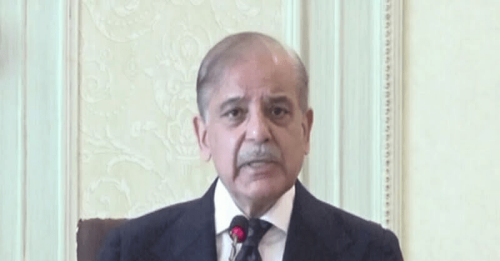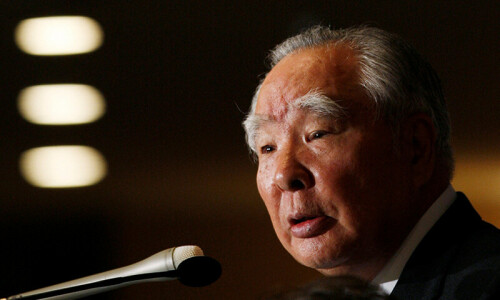
Development Pathways: India, Pakistan and Bangladesh 1947-2022
By Ishrat Husain with Sarah Nizamani, Shagufta Shabbar and Masood Ahmed Siddiqui
Liberty Publishing
ISBN: 9786277626198
469pp.
Where comparing oneself with one’s neighbours is not the best way to think about oneself and how one is doing, done at the national level it can be enlightening and can have many lessons for what could change and how as well.
And we, in Pakistan, do compare ourselves a lot with our neighbours, India and Bangladesh, in South Asia. And there are good reasons for it other than the fact that we might be nosy.
We share a common history, culture and traditions, we were part of the same country at one point, we started our individual development journeys together and, given our shared history and culture, we could learn a lot from each other’s successes and failures.
So far, most of these comparisons, seen in popular literature, have been anecdotal, piecemeal, related to one sector or issue and/or limited to a time period. Ishrat Husain and co-authors have given us a detailed account of development journeys of the three countries from 1947 to 2022 and for most of the important areas/sectors of the economy.
A comparable development story of Pakistan, India and Bangladesh and sectoral data and analysis can be very useful for those who want to understand why we are where we are and what could have been
Getting comparable data on three countries and for a period of 75 years is no mean feat. This, in itself, would have been a meaningful and worthwhile contribution to literature and to public domain. But the book under review, Development Pathways: India, Pakistan and Bangladesh 1947-2022, does a lot more than that.
It provides great summary chapters on the developments in the three countries over the 75 years (chapter 2, 3 and 4 by Dr Ishrat Husain) and then detailed chapters on developments in important economic areas (chapters 5 and 6 by Masood Siddiqui and chapters 7 and 8 by Shagufta Shabbar) and social sectors (chapters 9, 10 and 11 by Sarah Nizamani and chapter 12 by Shagufta Shabbar). Each chapter gives comparable data for the three countries and gives a detailed account of the area over the last 75 years.
This must have taken a lot of effort from the authors. But the result is definitely worth it and it will help a lot of students of economics, development, and social sciences interested in South Asia as well as policymakers and even interested general readers who want to understand why we are where we are and what could have been some alternative pathways for us and what paths are still open to us for future endeavours.
The macro headlines are quite familiar to those who have been studying or following the progress of the three countries. India started slowly, though it was better placed and prepared for independence, opted for import substituting industrialisation and kept the economy closed and heavily state-regulated for a long time. But this changed in the late 1980s and early 1990s. Since then, India has been growing a lot faster and has integrated a lot into the global economy.
Pakistan was more open from the start, made rapid progress in the middle years and kept up the decent performance till the 1980s but has, since, been facing significant macro imbalances and has not been able to commit to policy paths that could produce sustainable reasonable-to-high level growth.
Bangladesh had a difficult first decade or so. But by the 1990s had committed to more open and sustainable policies and these have paid dividends for the last couple of decades. GDP per capita, in constant USD, for 2021, was 2,000 for India, 1,200 for Pakistan and 2,100 for Bangladesh.
There are still significant challenges that each country faces. There are still too many people working in/on agriculture in the three countries. The transition to industry and the services sector has not happened fully. Intra-regional trade is too low. The rural-urban divide is still significant.

Climate change will be a challenge for all three countries and may be the biggest challenge they will face for the next decade or so. Human development — Pakistan is the laggard here — requires significant investments and prioritisation from all three counties. Poverty is still a major concern for all three countries.
Female labour force participation is still low in all the three countries, though Bangladesh is doing much better here than India and Pakistan. This will have to improve substantially. And governance systems require significant improvement. On the whole though, all three countries have made commendable progress from where they started their journey.
But the differences amongst them are enlightening too. India and Bangladesh have been able to achieve much better export performance, with different strategies, but these have helped in macro stability, whereas balance-of-payment crises have been a recurrent and serious problem for Pakistan.
On all human development indicators related to health and education, Pakistan has started lagging behind India and Bangladesh by quite a margin. This is doubly surprising since Pakistan achieved decent growth rates and sustained them for a substantial period before India and Bangladesh were able to do it.
But Pakistan chose not to invest in human development. Pakistan has the highest population growth and fertility rates. Educational outcomes are poorer in Pakistan. Pakistani infant and maternal mortality rates are way above ones for India and Bangladesh. Some 46.3 percent and 38.9 percent of the population were connected to the internet in India and Bangladesh, while this rate is at a mere 21 percent in Pakistan (2021 figures).
Bank account ownership, for the population above 15 years of age, is 77.53 percent in India and 52.81 percent in Bangladesh and it is only 20.98 percent in Pakistan (2021 figures).
Political instability has had a larger impact on policy continuity in Pakistan than in other places. Both India and Bangladesh, despite their challenges, have been able to implement policies that have offered predictable and more or less stable environments to both local and foreign investors. Pakistan has not been able to do so. Even today, Pakistan is looking to create differential treatment for local and foreign investors and investors from specific countries or for specific projects.
It must have taken a lot of effort to put all of the sectoral data and analysis together. This was done by the three younger scholars working under the guidance of Dr Husain. This effort needs to be appreciated. It will help a lot of students and readers. The historical and policy analysis, largely done in chapters by Dr Husain, enriches the narrative a lot and puts outcomes in perspective. And the concluding chapter, again by Dr Husain, brings forth some of the lessons and some areas where India, Pakistan and Bangladesh still have a lot of work to do.
There is some repetition across the book, as outcomes and policy choices get discussed both in part I of the book where Dr Husain is giving the overall stories and then again in the sector specific chapters, in part II and III. For those who know the overall story, the sectoral chapters would be more important to read. For readers coming to the area for the first time, some repetition is not a bad idea anyway.
Some anomalies that editing should have addressed, are there too. Chapters 5 and 6 have references and a bibliography at the end of the chapters but other chapters do not. The numbers given in Table 5.1 on page 84 and the numbers quoted in the narrative above the table do not match. Table 6.5 on page 164 does not mention the source of the data. Table numbering is a bit off as well, and there are no tables 6.4 and 6.6. But these are mostly small issues and do not interrupt the narrative, nor do they have any impact on the arguments.
Readers interested in understanding the development story of the three countries and seeing their performance compared in specific sectors will find the book to be very useful.
Through the comparisons, the authors also highlight the various policy choices that have been made, and this allows the reader to draw conclusions about some of the policy choices that need to be made, by these countries, to continue their journeys on the paths to development and to even accelerate the processes of development.
The reviewer is a senior research fellow at the Institute of Development and Economic Alternatives, and an associate professor of economics at Lums
Published in Dawn, Books & Authors, March 3rd, 2024















































Dear visitor, the comments section is undergoing an overhaul and will return soon.